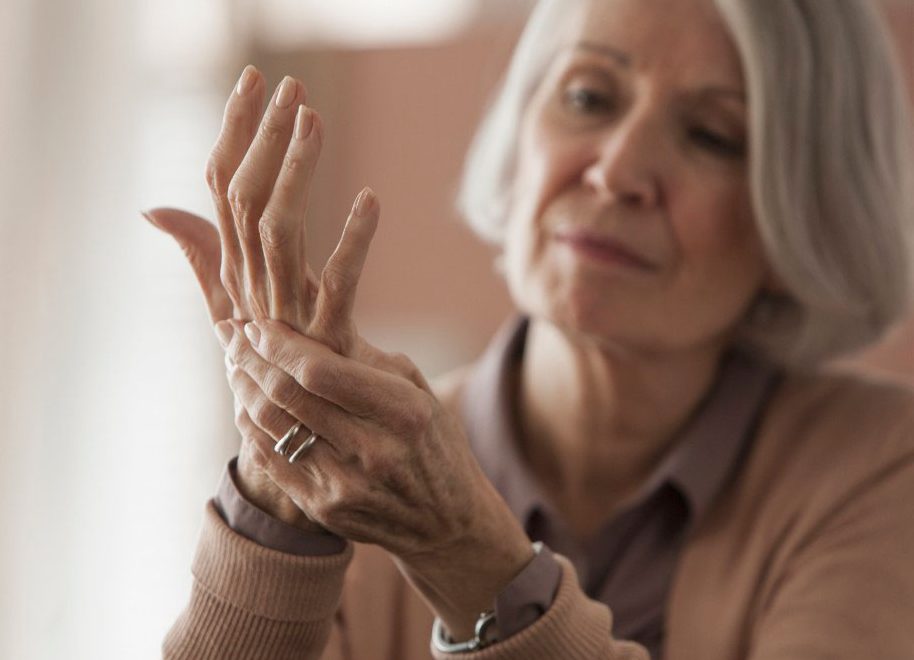The Best Exercise for Arthritis

Don't let osteoarthritis win. Exercise is your friend, lowering your pain thresholds and improving your mood. Learn more about the best exercise for arthritis.
Don’t let osteoarthritis make you sedentary. Both aerobic and strength-training exercises reduce pain and increase flexibility, often as effectively as an over-the-counter painkiller, acupuncture, or steroid injection. You’ll feel better the more you exercise.
To help an arthritic knee, for example, your best bet, according to a meta-analysis of 48 randomized controlled trials, is three sessions a week of knee-strengthening exercises alongside general aerobics. But exercise has an overall effect of lowering pain thresholds and improving mood, so even if you need to rest your knee, find another way to move — perhaps in a pool.
YOU MIGHT ALSO LIKE: Strength Training for When You’re Over 50
Try any of these options, varying them to minimize pain in the joints or if you get bored. They're really the best ways to exercise for arthritis.
Water exercise for arthritis
The safest place for you is in a pool or lake. Water provides gentle resistance and eases pain. You can simply walk in the pool submerged up to your waist or swim with a kickboard or a foam noodle. In an aquacise class, you’ll learn how to use the noodle or the side of the pool for balance while working your abdominal muscles. If your shoulder hurts, do a side-stroke rather than the butterfly and rely more heavily on your legs.
It’s harder to raise your heart rate in water, but it’s a good place to start moving when your arthritis is rough.
Biking for arthritis
Keep weight off your hips and knees while building up strength. Choose a bike that doesn’t require you to hunch over if pain in your shoulder, upper back, or neck is an issue. Start on a stationary bike, if you’re worried about your balance.
Getting your heart pumping will give you more stamina throughout the day, help control your weight by boosting your metabolism, and improve your sleep and mood. Relieving stress will help your body relax.
If arthritis pain is making you feel helpless and frustrated, you could tense up your muscles and make things worse. Aerobic exercise interrupts that bad cycle.
Lift weights or do other strength-training
Older women often skip strength-training in favor of stretching — that’s a mistake. To learn the equipment and avoid injuries, consider hiring a trainer to set up a safe routine and help you move forward.
YOU MIGHT ALSO LIKE: Hand Problems and Exercises to Help Them
Try out classes
Feldenkrais, Pilates, and Alexander are non-aerobic exercise programs, each named after their founder, that are especially popular among seniors, women, and dancers. They are designed to help people with injuries or pain, and your teacher can adapt the exercises to your needs.
The ancient arts of yoga and Tai chi can improve your balance, helping prevent falls, a big danger for older people. They also help maintain range of motion. Try to move your affected joint through its full span every day; you may find you’re more flexible than you were before you became aware of arthritis.
How much exercise do you need?
The Centers for Disease Control and Prevention recommends that adults get at least two hours and 30 minutes of moderate-intense aerobic activity each week. Brisk walking counts. For the same benefit, you can spend half as much time on an intense activity like running. Put together your own combination, spreading the time through the week. Even 10 minutes at a time works.
In addition, do strengthening activities on at least two days, working your legs, hips, back, abdomen, chest, and shoulders.
Don’t push through intense pain, especially if you’ve had an injury. Basketball, football, handball, volleyball, and high intensity running on hard surfaces are all rough on the knees and hips.
The main cause of arthritis is age. Virtually everyone over the age of 60 shows some signs of worn-out cartilage, typically in the hip or knee.
Younger people typically develop arthritis from injuries or obesity. For every pound of body weight, your knees must handle three pounds of added stress, according to the Arthritis Foundation; for hips, each pound translates into six times the pressure.
Years of carrying extra pounds weakens the cartilage that cushions your joints. Until they lose weight, obese people may have to stick to a pool or biking to keep weight off their knees, but dropping pounds will turn the problem around.
Even though your arthritis showed up on an x-ray, your pain may have other contributing causes. Interrupted or too little sleep diminishes pain tolerance. The problem may be sleep apnea, anxiety, or bad habits. Turn off your smartphone and computer an hour or more before bedtime. Irrigate a clogged nose.
You may need a new mattress or a test for sleep apnea.
A drop in estrogen can also lower pain thresholds. So can low thyroid activity.
Vijay Vad, MD, a sports medicine specialist at the Hospital for Special Surgery in New York City and the author of “Stop Pain: Inflammation Relief for an Active Life,” recommends that anyone with arthritis or any type of joint or muscle pain that has taken a turn for the worse ask for a “thyroid function panel.” The test measures levels of thyroid stimulating hormone (TSH) and other hormones in your blood. A normal TSH is between 0.4 mlU/L and 4.0 mlU/L. Medication can relieve pain within a month, even if your level is considered “borderline.”
Joint aches can be a symptom of Lyme disease as well.
Updated:
September 06, 2023
Reviewed By:
Janet O’Dell, RN